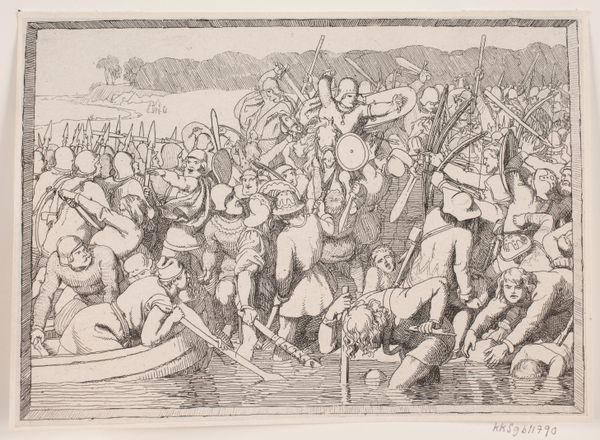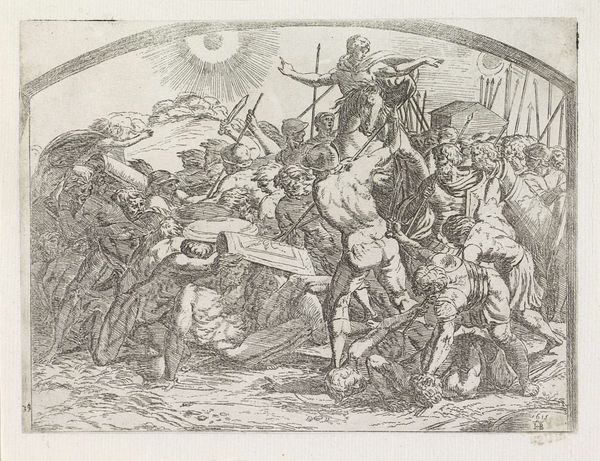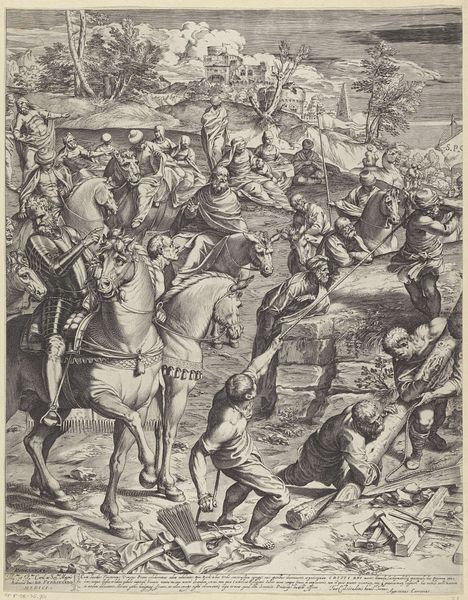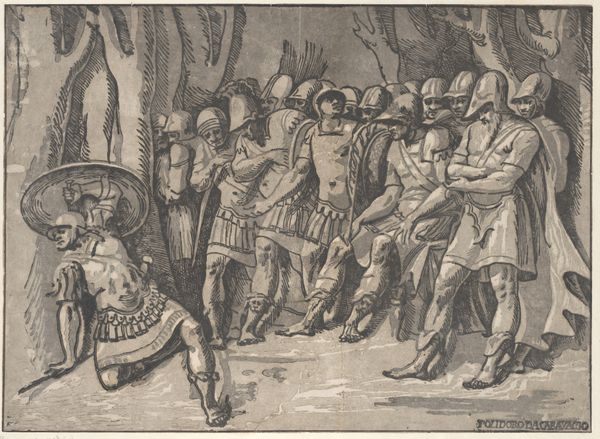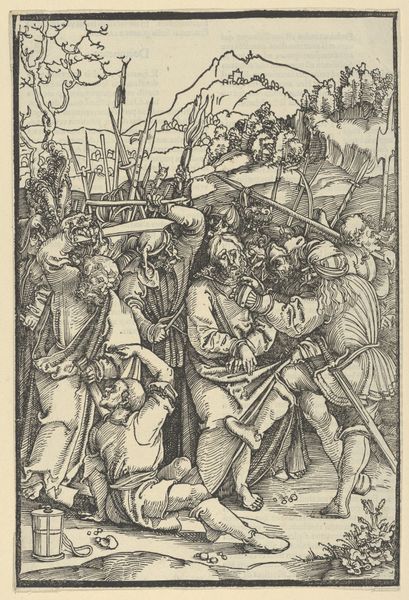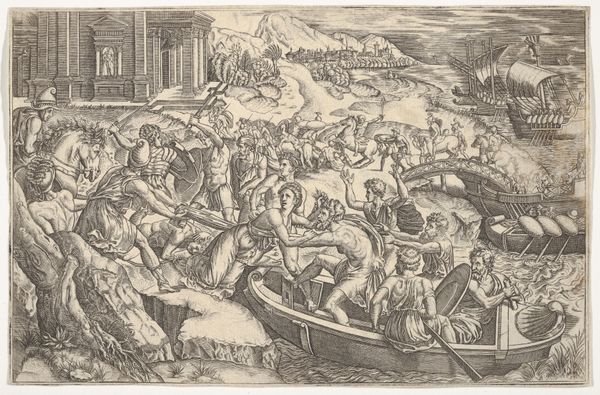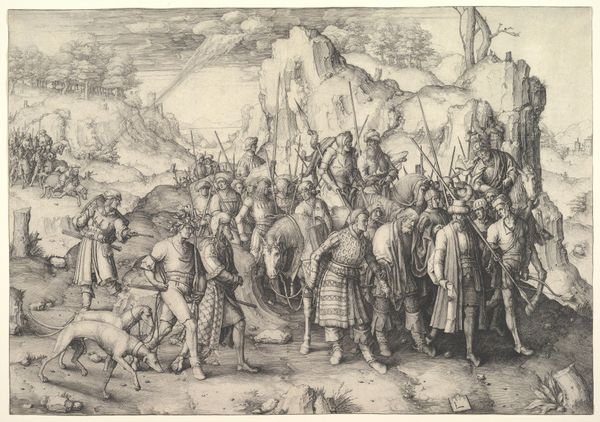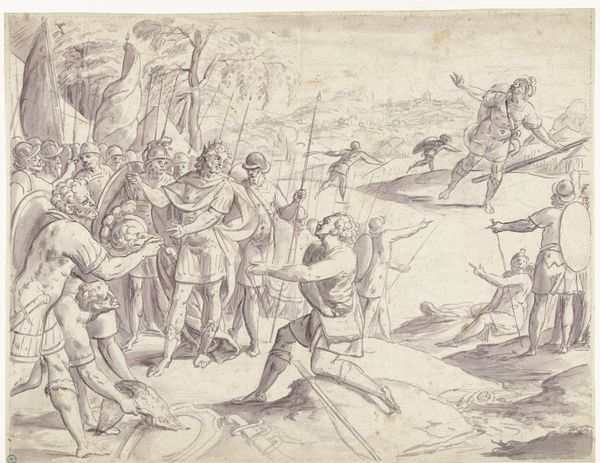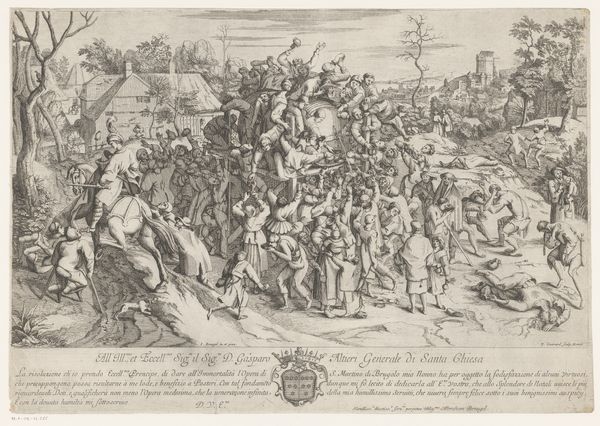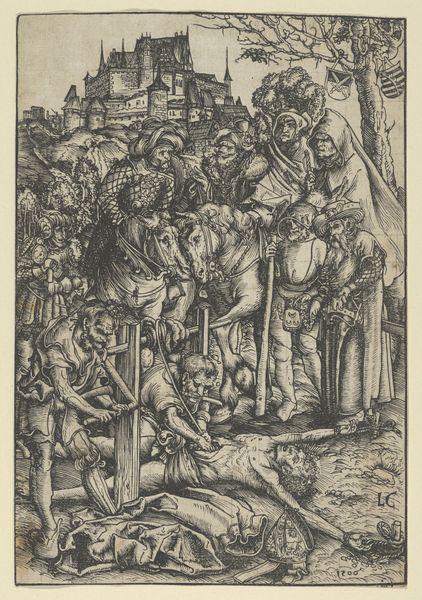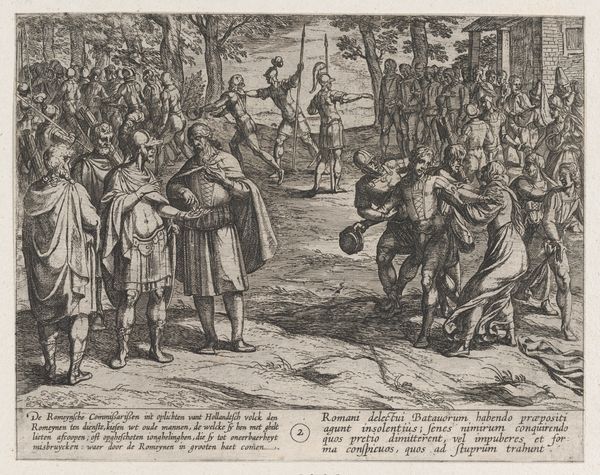
drawing, print, etching, ink, woodcut, engraving
#
drawing
#
narrative-art
#
pen drawing
# print
#
etching
#
landscape
#
figuration
#
ink
#
woodcut
#
genre-painting
#
northern-renaissance
#
engraving
Dimensions: height 327 mm, width 519 mm
Copyright: Rijks Museum: Open Domain
Curator: Cornelis Anthonisz.’s “De boom van fortuin,” dating perhaps from 1548-1699, is on display here at the Rijksmuseum. The artist utilized etching, engraving, woodcut, drawing, and ink in the print’s creation. Editor: What a frenetic scene! It’s a teeming mass of bodies clawing around this central tree. The dense line work gives it an almost chaotic energy. Curator: Chaotic is one word. What's interesting is that Anthonisz., like many artists of his time, operated within a complex network of workshops and printmakers. Prints like this were commodities, disseminated widely. The collaborative nature of their production challenges notions of singular artistic genius. The various marks on this one speak to that layering of processes. Editor: Yes, you can certainly read the visual layering and the interplay between those different mediums. But look at how he's managed to articulate such a variety of poses and expressions. There is such clarity, and the tree form—however crude—gives it an upward thrust that opposes the scrambling figures. The ships in the background introduce another spatial dimension. Curator: Well, and the backdrop tells us much about consumption! Ships allude to the Dutch Golden Age, wealth flowing into Amsterdam, a result of exploiting cheap labor and stolen resources from colonized lands...this piece is dripping with capitalist ambition! Editor: True, the maritime references can also suggest opportunity and journeys, while the throngs reaching upward are almost allegorical—each gesture so dramatically rendered as if each person wants desperately to grab something before another gets there. It creates a real tension. Curator: These prints often functioned as moralizing tales. Fortunes can be fleeting, built on unstable grounds. One can find wealth through chance and vice, but that may just be snatched from your grasp! This connects directly with the material realities of 17th-century life. Editor: I agree with your interpretation of its function. Seeing these lines, how the shapes and spaces create balance despite the pandemonium makes me really admire how effectively it holds everything together as a scene. Curator: For me, it is about the socio-economic structures that informed the creation of "De boom van fortuin," the availability of certain material. A narrative etched in its production process, if you will! Editor: I can appreciate your point, considering that so much detail went into the characters. Now, excuse me, as I will go get a drawing tool of my own!
Comments
No comments
Be the first to comment and join the conversation on the ultimate creative platform.
